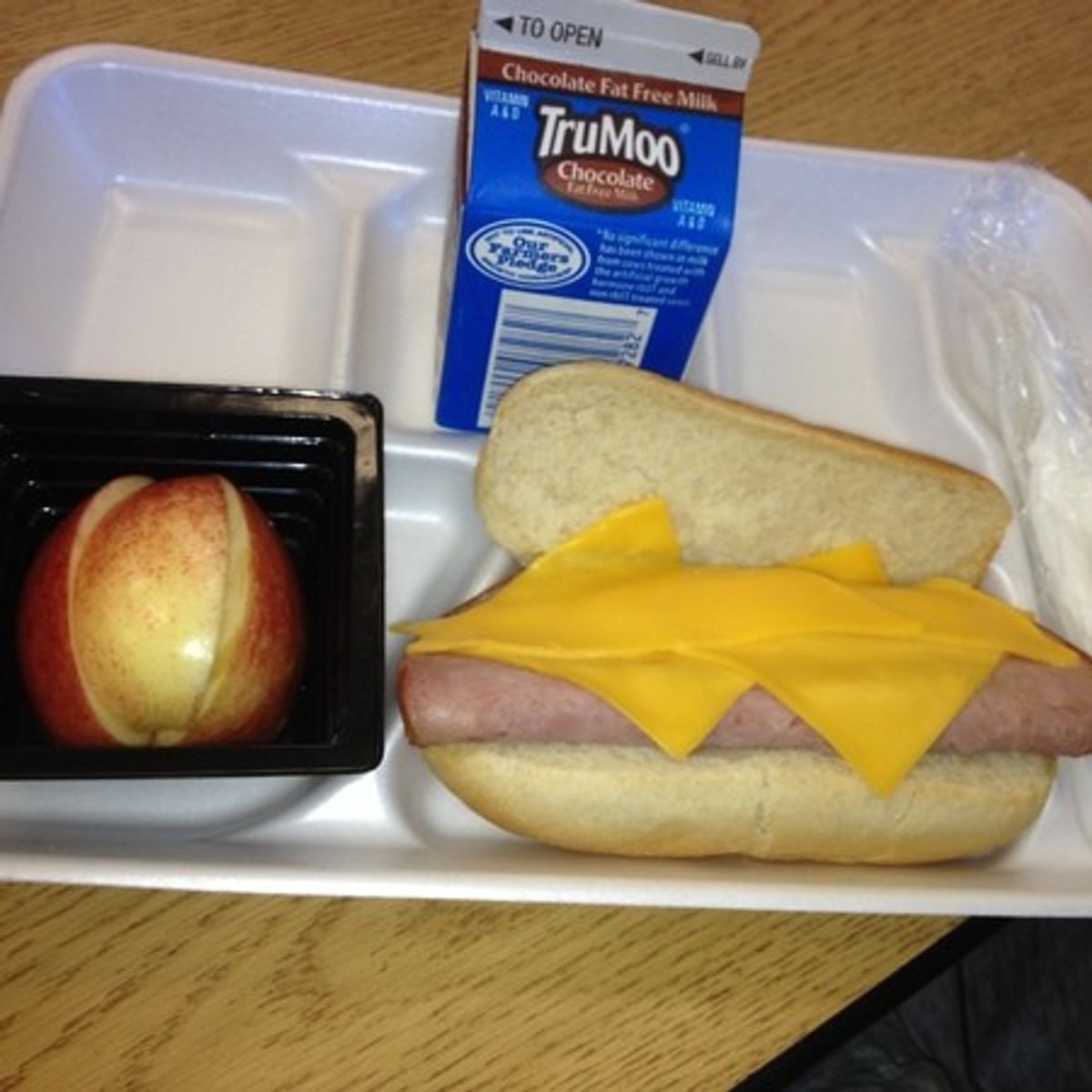
Almost anybody that has gone to a public school in the United States have had to eat lunches such as the one above. They’re not nutritious, filled with chemicals, and taste horrible. It’s become a joke amongst high school students who are forced to eat schools lunches everyday. The sad reality is that the people who make the food and work hard to give students a warm meal everyday are at the butt of most of these jokes. The chefs that work in schools are typically underpaid and work long hours to prepare food for thousands of students each day. For many students these meals are the only food they receive all day, and thus “lunch ladies” as they’re called, though they can be both male and female, take pride in their work and the service they provide.

Typically as well, the cafeteria workers enjoy cooking and preparing food but receive little funding to use their creativity and skills to make good lunches. Although funding has increased for school lunches, most people would argue that lunch quality hasn’t increased, and this simply boils down to the ingredients that are provided to the schools. The government provides schools with access to purchase various products but for the most part schools have to buy ingredients from either local sources or large companies. Thus they must decide to spend large amounts of money on quality ingredients or less money on more ingredients. Large companies make their meals as cheap as possible by replacing nutrition with chemicals and processed sugars. The government preaches for schools to provide healthy lunches but fails to provide access to cheap AND healthy ingredients which hurts students. Students are forced to eat these unhealthy meals and adopt lifestyles that lead to diabetes, obesity, and possibly eating disorders. Students that can’t afford to pack face the worst repercussions however, and rely on these lunches to feel full during the day. Thus, they may have cheap meals but they’re not nutritious and lead to unhealthy lifestyles.

In 2010, Michelle Obama began her campaign to implement healthier and cost effective meals for underprivileged students. The Healthy, Hunger Free Kids Act which she worked on very heavily throughout her tenure as First Lady led to increased funding for lunches, and created the Food Plate which most high school students remember from their childhood. The act helped to provide students with free or reduced lunches to ease the costs of food for underprivileged families and brought extensive reform to the food that could be served in schools, as well as educating students about how to eat healthier.
Hopefully in the future we’ll see increased funding for education and in turn school lunches. They’re a vital component for many student’s nutrition throughout the country and can be looked forward to rather than made into the joke that we see school lunches as today.